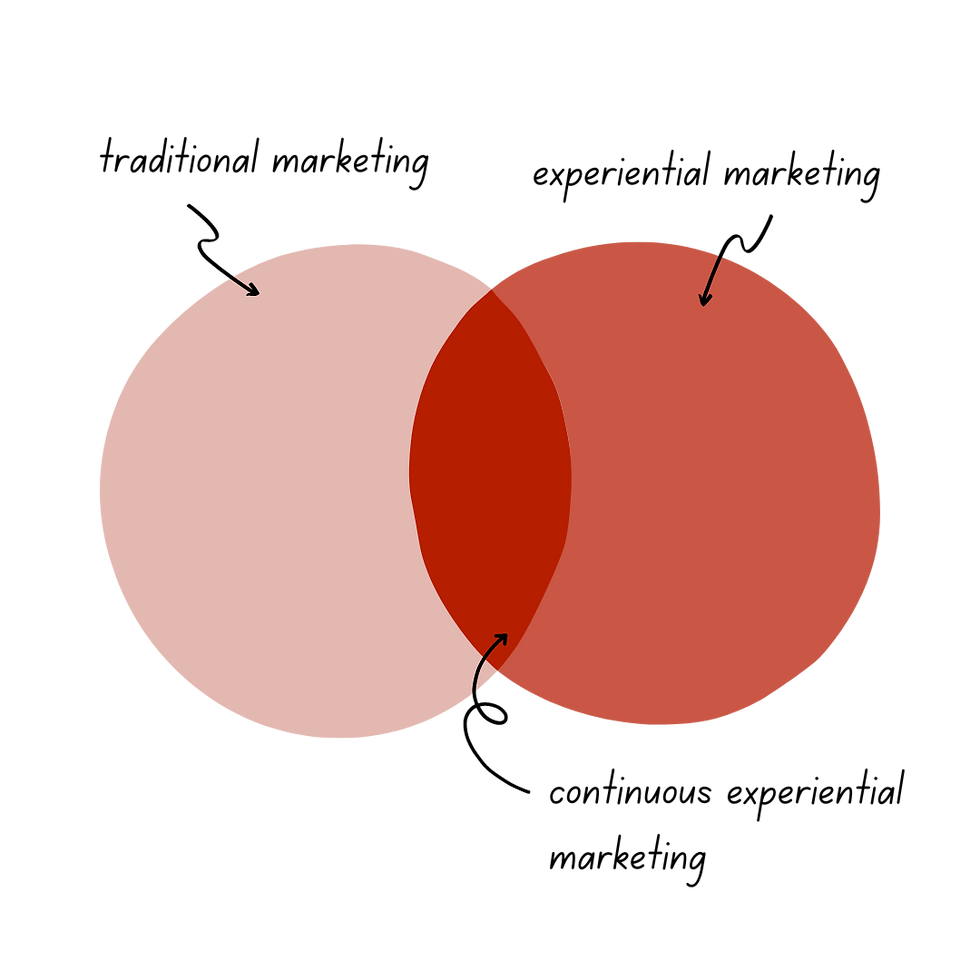Experiential Marketing: An Integrated and Continuous Approach with (Ever)Lasting Effects
- Olivia Settle
- Jun 17, 2024
- 2 min read
Updated: Jun 24, 2024
Key Definitions:
Marketing: Marketing is the activity, set of institutions, and processes for creating, communicating, delivering, and exchanging offerings that have value for customers, clients, partners, and society at large.
Experiential: involving or based on experience and observation.
Integrated: with various parts or aspects linked or coordinated.
Traditional: existing in or as part of a tradition; long-established.
Continuous: forming an unbroken whole; without interruption.
What is Experiential Marketing?
When it comes to experiential marketing, sometimes known as engagement marketing, marketers often think of in person events and experiences. This strategy invites prospects and customers to engage with a brand or product tangibly, in real life. This could be an event, trade show, sampling & demo, festival, or award ceremonies. By connecting a customer to the brand in real life, the goal is to create a positive connection that lasts.
What if Experiential Marketing Was Continuous?
Engaging events are great and if done well, will certainly create a lasting effect. But, what if the effect was being created continuously? If the experiential approach to the brand did not start, change and stop with an event. What if every touch point was considered an event in itself, an experience.
Taking a Holistic Approach to Experiential Marketing
By treating prospects and customers' every interaction as experiential, you create a cohesive and integrated experience with your brand and products. Experiences are so frequent and intentional that they become one continuous experience that is as tangible online as it is in person. Each touch point is viewed as an experiential opportunity and executed purposefully to create an effect.

By viewing all touch points as experiences, traditional and experiential marketing converge to create a continuous experiential marketing experience that starts at the first touch point and never ends. And why should it? If it does end, that means this customer is no longer interacting meaningfully with your brand.
Of course, tactics should be reviewed altered based on where prospects and customers are in their stage in the buying journey and these tactics are measured and evaluated constantly - not just at the end of a particular initiative as with typical experiential marketing campaigns.
Making the Switch to Continuous Experiential Marketing
If you are looking to add an experiential components to your marketing strategy, don't feel overwhelmed. Your campaigns will continue to be successful as you review them from an experiential standpoint and changes are only as big as you see fit. To review, ask yourself these simple questions and test each step of the customer journey and interaction point:
Is this process something I'm proud to have represent my brand and aligns with our messaging?
Is there anything I can do to improve this experience?
Once you have these questions answered, you can adjust each step and align with your brand purposes and goals. You'll notice deeper connections and more meaningful conversations will result from a continuous experiential strategy. If you need any assistance with this, please don't hesitate to reach out and contact us.


Comments